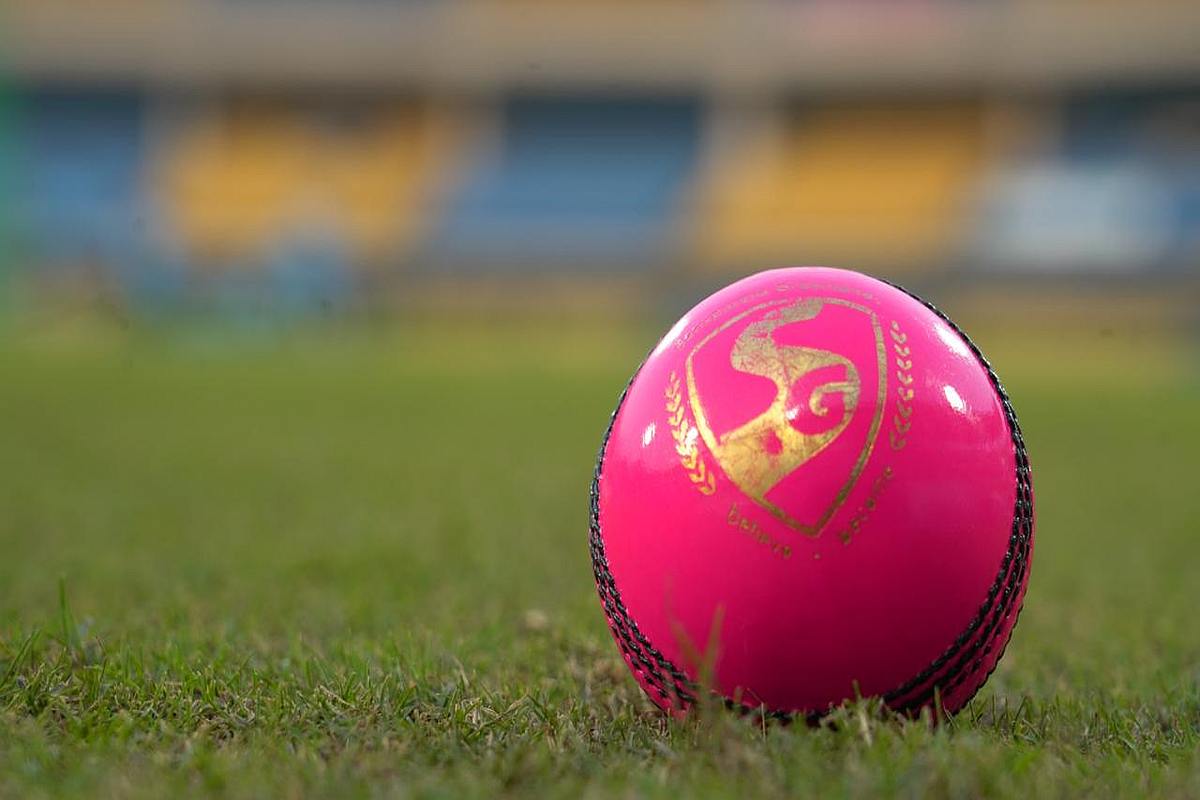Cong defeated ‘Bangladesh’ in semis, will rout ‘Pakistan’ in finals: Reddy
Reddy was addressing a meeting of the Congress social media team and took digs at both the BJP and the BRS.
Although the first pink ball was made 10 years ago, it was only in 2015 that the first-ever Pink ball Test Match was played.

SG Pink ball. (Photo: Twitter/@BCCI)
When India and Bangladesh take the field for their first Day-Night Test Match, the teams will have a pink ball with them for the duration of the contest. As many as eight teams of the world have played Test Cricket with the pink ball, however, this will be the first experience for both Bangladesh and India. Earlier, cricket only had two coloured balls- the traditional red cherry and the white ball used in limited-overs cricket.
However, now a brand new Pink ball has emerged in the cricketing setup. Let us find out the story of the pink ball.
Was made 10 years ago
Advertisement
The first-ever pink ball was made by Australian manufacturing unit- Kookaburra. For years Kookaburra tested the ball before finally coming out with an ideal ball which could be used in international cricket. Although the first pink ball was made 10 years ago, its further testing and evolution took another 5-6 years and only then in 2015 the first Day-Night Test was played between Australia and New Zealand at the picturesque Adelaide.
Why the colour pink?
While the traditional format is played in white clothing, red ball can be easily spotted amid the white and in daylight conditions. Similarly, the white ball can be easily spotted amid coloured clothing in limited-overs cricket. However, in Day-Night Test, pink ball has been finalised. But Why pink?
Regarding the same Brett Elliot, Managing Director of Kookaburra, stated that initially a lot of other colours were tried including yellow and orange. However, the biggest problem with other colours was that they were not camera friendly. The Cameramen covering trial matches with these other coloured balls had complained that it was very difficult to pick them and sometimes could not be spotted at all.
After the drama, pink colour was chosen with everyone’s consensus.
One among 16 pink shades was chosen
After finalising the pink colour, the biggest challenge was to finalise which shade of pink colour should be finalised. For this, 16 different shades of pink were tried. Elliot explained that 16 shades of pink balls were then again put under tests and trials and eventually an ideal shade was selected which is what one can see in Day-Night Test matches.
The colour of the seam
It wasn’t that easy to create a new cricket ball. Even after finalising the ideal shade of pink for the ball, the next challenge was to decide the colour of the seam. For these various experiments were done. Elliot explains how the company first used black colour threads for the seam of the pink ball. Then the green colour was used and even white colour threads were tested. However, eventually green got the nod from everyone concerned.
Difference between the red and pink ball
Eliott describes that there is not much of a difference between the manufacturing process of both the red and pink balls. The inner structure of both the balls are the same, only the outer coating is different.
In terms of bounce, hardness and performance, there is no difference as far as the manufacturing process is concerned. However, after the red ball has been polished red and pink ball given their pink coating, the pink ball is given an additional protective coating which prevents the pink colour from being diluted and eroded easily.
First Pink ball match played in 2009
In the cricketing world, the first-ever pink ball match was a One-day encounter. The match was played between Australia Women and England Women in 2009. However, it took six more years for the pink ball to be used in men’s cricket.
The first Pink Ball Day-Night Test
The first-ever Day-Night Test was played on 27 November 2015 between New Zealand and Australia. Australia went on to win the match by 3 wickets. As many as 11 Day Night Tests have been played so far.
How many teams have played the Day-Night Test?
As many as eight teams have played the Day-Night Test till now. These include Australia, New Zealand, Sri Lanka, England, Pakistan, South Africa, West Indies and Zimbabwe.
SG balls will be used
Notably, SG balls will be used for the Eden Garden Day-Night Test match. In India, SG balls are preferred for International and domestic matches and it remains to be seen if the SG balls behave differently under lights than the Kookaburra balls.
Some facts on the #PinkBall to be used in the D/N #Test match between #Indian & #Bangladesh from Nov 22 at #EdenGardens#CAB pic.twitter.com/AKj8rnm01w
— CABCricket (@CabCricket) November 16, 2019
Advertisement